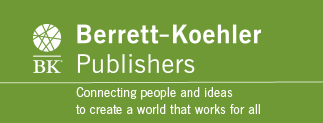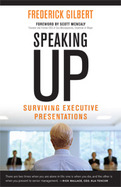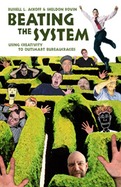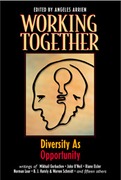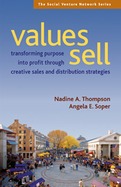2013
- The first book to focus on presenting to senior managementpeople with very specific expectations and requirements and the power to make or break careers
- Draws on interviews with more than fifty C-level executives
- Includes nine chapters containing QR codes for free videos on the chapter topics
- Click here for the press release
There are two times when youre alone in life: one is when you die, and the other is when you present to senior management.
Rick Wallace, CEO, KLA-Tencor
If you are in middle management, you live with daily ambiguity, lack of control, and even chaos. To get anything done, you must present your ideas to decision makers, and those presentations can be brutal. Careers and projects can come unwound in a matter of minutes if a presenter at the top level doesnt know the rules.
Fear in the middle creates fog at the top, and bad decisions are made. The stakes are highone presentation can make or break a careerbut the rules are utterly unclear. Or at least they used to be.
Speaking Up is an indispensable resource for anyone who needs to know how to present to those higher up the chain. It offers revelatory insights into the minds of the men and women at the topinformation that is crucial to understanding what theyre looking for from presenters. Tactics and techniques that work well with peers, subordinates, and immediate supervisors may actually work against you when presenting up the chain.
Psychologist and coach Frederick Gilbert shows why these high-level presentations are about one thing: delivering information to help extremely talented, highly stressed people make good decisionsfast.
Gilbert focuses on three simple rules for speaking up: (1) know the people, (2) get to the point, and (3) improvise. Based on ten years of research and hundreds of interviews, Gilberts book is unique in featuring extensive comments from executives explaining exactly what they want and dont want in a presentation, as well as midlevel managers stories of triumphs and tragedies and what they learned as a result. This a must-read book for surviving high-stakes meetings.
2005
The need to beat the many systems that compromise our quality of life goes without saying. When was the last time you dealt with a bureaucracy--a business, a government agency, a school, a hospital--and got a direct answer to a question or received a service you wanted without having to weave through a maze of infuriating hand-offs? Have you found these systems to be utterly indifferent to the inconvenience or hardship they cause? Want to learn how to beat them?
Beating the System shows you how. Coauthors Russell Ackoff and Sheldon Rovin have spent their lives studying how organizational systems work, and here they share both perversely entertaining anecdotes about the abuse of individuals by a variety of bureaucracies, and descriptions of the creative--and deeply satisfying--approaches these people used to get even.
The authors begin by exploring how systems function and malfunction, where their weaknesses are, and what drives them. They then show that much of bureaucratic power is based on unchallenged assumptions--assumptions systems make about themselves and us, and assumptions we make about these systems and ourselves, and that challenging these assumptions is the essence of creativity and the first step in system beating. Ackoff and Rovin use stories to illustrate successful strategies and tactics for defying these assumptions and turning the tables on the many bureaucracies that frustrate us.
- Provides practical, easy-to-use tactics and strategies for creatively beating any bureaucratic system that is trying to beat you
- Full of entertaining real-world stories of people who have been frustrated by unresponsive systems and have successfully fought back
- Coauthor Russell L. Ackoff is an internationally renowned pioneer in the world of systems thinking who has spent over 50 years studying how organizations work
2006
• Exposes the destructive consequences of the 'you're on your own" approach to dealing with pressing societal problems
• Shows how a more collaborative 'we're all in this together" strategy can better resolve these problems and ensure that risks and benefits are shared equitably
• Details specific alternatives to current policies in areas like globalization, health care, and employment
2001
A stellar list of contributors bring a variety of perspectives to establish one central theme: diversity is an advantage to be utilized, not a problem to be solved. Themselves representing a wide range of cultural, national, and vocational perspectives, the contributors examine how diversity creates new possibilities for working together in our projects, our organizations, and our lives. Working Together reveals diversity as a rich resource to meet the challenges of our changing times, an unparalleled opportunity to bring together a multiplicity of gifts for a common purpose.
- A stellar array of contributors includes such well known figures as Mikhail Gorbachev, Riane Eisler, and Norman Lear
- Helps individuals, communities, and organizations to recognize diversity as a rich resource as opposed to an obstacle to growth
2007
- Presents practical, detailed advice for developing innovative sales and distribution strategies
- Features examples from companies such as Tom's of Maine, Seventh Generation, Honest Tea, and many others
This is a book about taking health care the last mile-sometimes literally-to prevent widespread, unnecessary, and easily avoided death and suffering.
Every four minutes, over 50 children under the age of five die. In the same four minutes, 2 mothers lose their lives in childbirth. Every year, malaria kills nearly 1.2 million people, despite the fact that it can be prevented with a mosquito net and treated for less than $1.50. Sadly, this list goes on and on. Millions are dying from diseases that we can easily and inexpensively prevent, diagnose, and treat. Why? Because even though we know exactly what people need, we just can’t get it to them. They are dying not because we can’t solve a medical problem but because we can’t solve a logistics problem. In this profoundly important book, Eric G. Bing and Marc J. Epstein lay out a solution: a new kind of bottom-up health care that is delivered at the source. We need microclinics, micropharmacies, and microentrepreneurs located in the remote, hard-to-reach communities they serve. By building a new model that “scales down” to train and incentivize all kinds of health-care providers in their own villages and towns, we can create an army of on-site professionals who can prevent tragedy at a fraction of the cost of top-down bureaucratic programs. Bing and Epstein have seen the model work, and they provide example after example of the extraordinary results it has achieved in Africa, Asia, and Latin America. This is a book about taking health care the last mile—sometimes literally—to prevent widespread, unnecessary, and easily avoided death and suffering. Pharmacy on a Bicycle shows how the same forces of innovation and entrepreneurship that work in first-world business cultures can be unleashed to save the lives of millions.- Offers a creative, entrepreneurial approach to bringing lifesaving health care to those who need it most
- Features real-world examples of this approach in action around the world
- Coauthored by a prominent health-care expert and a leading business professor and copublished by the prestigious George W. Bush Institute
- Read the press release here; for media review copies contact [email protected]
Every three minutes, nearly 50 children under the age of five dies. In the same three minutes, 2 mothers lose their lives in childbirth. Every year, malaria kills 655,000 people, despite the fact that it can be prevented with a mosquito net and treated for $1.41.
Sadly, this list goes on and on. Millions are dying from diseases that we can easily and inexpensively prevent, diagnose, and treat. Why? Because even though we know exactly what people need, we just cant get it to them. They are dying not because we can't solve a medical problem but because we cant solve a logistics problem.
In this profoundly important book, Eric Bing and Marc Epstein lay out a solution: a new kind of bottom-up health care that is delivered at the source. We need microclinics, micropharmacies, and microentrepreneurs located in the remote, hard-to-reach communities they serve. By building a new model that "scales down" to train and incentivize all kinds of health-care providers in their own villages and towns, we can create an army of on-site professionals who can prevent tragedy at a fraction of the cost of top-down bureaucratic programs.
Bing and Epstein have seen the model work, and they provide example after example of the extraordinary results it has achieved in Africa, Asia, and Latin America. They describe the principles and practices involved in implementing it and explain how to apply it to overcome specific health challenges.
This is a book about taking health care the last milesometimes literallyto prevent widespread, unnecessary, and easily avoided death and suffering. Pharmacy on a Bicycle shows how the same forces of innovation and entrepreneurship that work in first-world business cultures can be unleashed to save the lives of millions.
